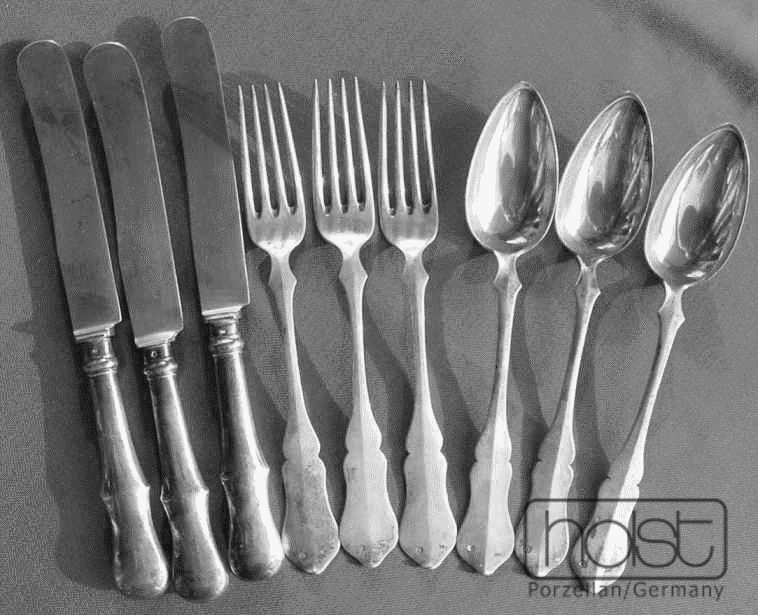Cutlery abrasion
Cutlery abrasion on ceramic glazes
What happened: After repeated use, dark, black lines and striae form on the surface (glaue) of the tableware. Usually only on plates and platter on which food is cut with a knife. On closer inspection, it can be seen that the glaze itself is not damaged and that these lines are practically - more or less - on the glaze.
Porcelain (the glaze) has a hardness of 5 to 7 Mohs and thus cuts all materials with a hardness of 1 to 6, including chrome steel cutlery, which is usually marked with a hardness of 3 - 4 Mohs. In other words: genuine hard porcelain should not be damaged by an ordinary chrome steel blade of a knife. The opposite is true for cutlery abrasion: the softer cutlery rubs off on the harder porcelain glaze, leaving behind this type of cutting marks, which are called cutlery abrasion.
By the way, cutlery abrasion has only been a topic in the porcelain industry since the invention of the dishwasher machines. If the tableware is not completely degreased and freed of arrears in the machine despite the use of aggressive detergents, this increases the risk of cutlery abrasion. Arrears such as minerals, lime and salts which settle in the upper layer of a glaze due to glaze corrosion increase the risk of cutlery abrasion.
Recommendation
Always sharp, expertly ground knives cut better, thus reducing the pressure on the material to be cut and thus also the abrasion of the cutlery!
Likewise, glaze injuries should be avoided by not using coarse and hard abrasives. Above all, however, it must be absolutely ruled out that no crockery baskets with a damaged plastic coating are used, as the metal underneath transfers corrosion residues to porcelain and cutlery, which are mainly responsible for cutlery abrasion.
You can find out more about abrasion on our glazes page.
Conclusion
Abrasion marks on the glaze porcelain are definitely not a defect of the porcelain, it is a defect of the cutlery!

